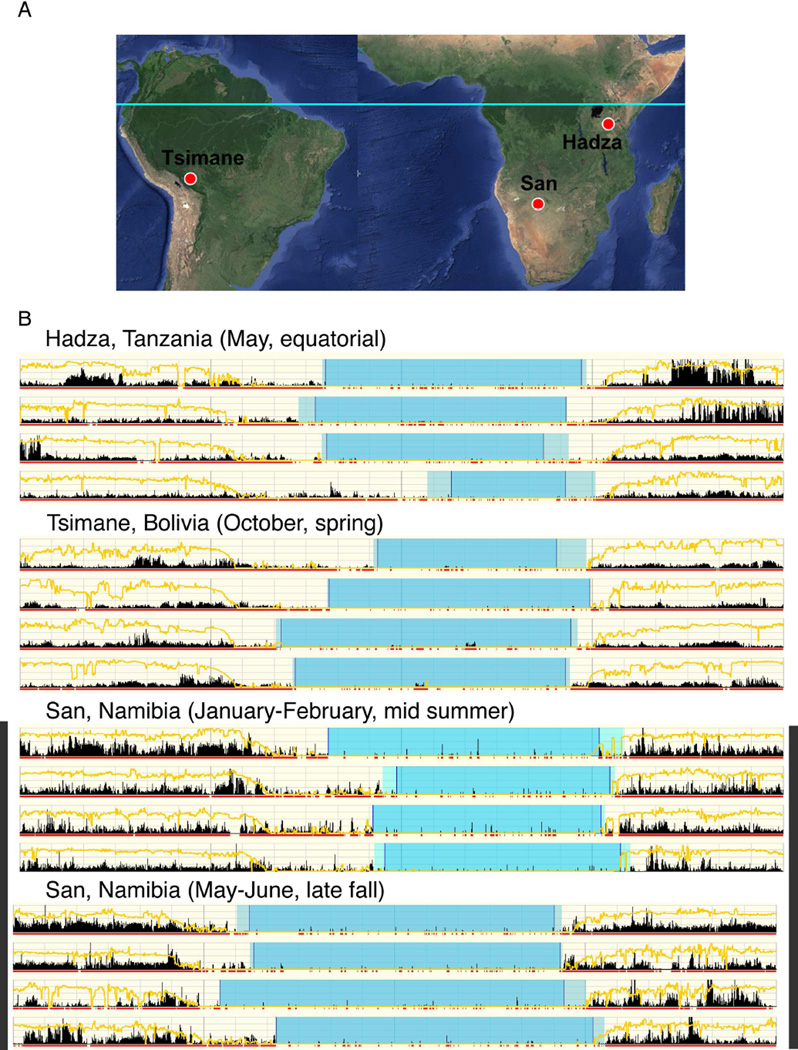Fig 1. Location of recording sites.
(A) (Left to right, Tsimané, San, Hadza). (B) Representative Actograms from Hadza, Tsimané and San subjects (the bottom 2 sets show the same San participant in summer (upper set) and winter (lower set)). Sleep onset time is highly variable and occurred several hours after sunset in all groups. Awakening time was relatively regular and occurred before sunrise, except in the San in summer. Naps may have occurred on up to 7% of days in winter and up to 22% of days in summer. Extended periods of nocturnal waking were rare. Yellow line is a log plot of light level; red, 1-min intervals with movement; black number of movements in each 1-min interval; light blue=Actogram scored rest; dark blue=Actogram scored sleep period. Sleep period, defined as interval between sleep onset and offset is greater than sleep time, defined as sleep period minus waking after sleep onset (WASO). Sleep efficiency (sleep time divided by “bed” time) was between 81 and 86%, similar to that in industrial populations. See Table S1).

